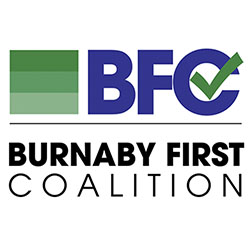Developers help fill Burnaby’s coffers to tune of $1 billion
The physical transformation around Brentwood, Lougheed, Metrotown and Edmonds is dramatic, with nearly 100 new residential buildings underway or in the pipeline.
There are cranes galore and condo towers are popping up all over Burnaby’s major town centres. The physical transformation around Brentwood, Lougheed, Metrotown and Edmonds is dramatic, with nearly 100 new residential buildings underway or in the pipeline.
All of this construction is also helping fill the city’s coffers.
Burnaby is one of only two municipalities in B.C. that operate debt-free.
But it’s Burnaby that is known for investing its so-called “reserve funds,” which are now in excess of a staggering $1 billion. (To compare, the City of Langley, which is the other B.C. city that doesn’t carry a debt, has around $30 million to invest.)
In 2016, this $1 billion-plus fund was invested both short and long-term and returned $44 million in income.
The City of Burnaby adds to this investment pool from its annual surpluses, which in 2016 was $188.3 million (up $60.1 million from 2015).
Total city revenues for 2016 were $599 million, up $77.5 million from 2015, “mainly due to additional contributions from developers through the Community Benefit Bonus program as well as donated assets, development permits and program revenues,” according to the city’s 2016 statement of financial information.
The Community Benefit Bonus program allows city council to approve additional density in exchange for a community benefit, including cash. In 2016, Burnaby received $85.2 million from developers specifically for the right to build more units than previously existed on a site. The figure has fluctuated in recent years, but generally outpaced projections. In 2015, it was $39.8 million. In 2014, it was $53.6 million.
In 2016, the City of Vancouver made 51 approvals for a total of 3.1 million square feet in additional density and charged developers $127 million for this, an amount of money it has designated for securing 884 rental housing units.
Along with population growth (from about 175,000 in 1996 to over 230,000 now), Burnaby’s reserve fund has been increasing. This has drawn some questions about what it could do to reduce taxes, build facilities and add rental housing, which the mayor has said requires more provincial attention.
“The City of Burnaby is unique in that it has a pay-as-you-go strategy versus taking on debt,” said Bob Klimek, the city’s deputy director of finance.
“Most municipalities raise money by taking on external debt and significant interest charges.”
Klimek said the city has been debt-free since 1997, when it “decided to use capital reserves to pay off its external debt.”
“There is a public perception that there is a lot of discretionary reserves … The key thing is that it’s a mistake to think this pool can be used as you would like. It’s earmarked for significant financial commitments.”
Indeed, the latest municipal report does show how the reserve funds of over $1 billion are divided into 11 “earmarked” categories, including $447 million for replacing capital and infrastructure assets, $280 million for community amenities and $52.3 million for affordable housing.
There are also funds that are used for specific projects, like $21.7 million for new facilities, $58.7 million for replacing vehicles and $6.3 million to handle larger budget jolts such as this past winter’s heavy snowfall.
